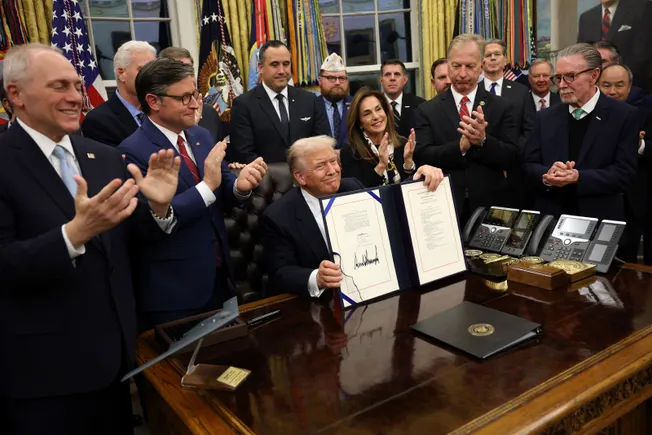In 2020, video hiring was an emergency response during the pandemic. In 2025, many talent acquisition leaders see it as a competitive advantage.
The difference isn’t just that companies got better at conducting remote interviews. The entire premise of what video hiring does has shifted. What began as a digital replacement for in-person conversations has matured into a skills validation platform tackling one of HR’s most stubborn problems: how to give the most candidates a fair shot without sacrificing quality.
“Some companies hiring at scale screen millions per year for one position,” says Mike Hudy, chief science officer at HireVue, which has hosted more than 70 million video interviews since its founding. He says the platform aims to ensure every interested candidate has access to opportunity.
Seventy-two percent of companies still rely on resumes or self-reported skills to identify talent, according to research from Aptitude Research. Video hiring, in its evolved form, is breaking that bottleneck.
From convenience to validation
Early video hiring replaced phone screens and in-person interviews out of necessity. Modern video hiring validates skills that predict job success.
“Video links talent to opportunity,” Hudy says. “It’s largely aligning skills and [hiring] workflow.”

Video is now part of comprehensive hiring systems that include AI-powered competency assessments, structured interview frameworks and automated candidate progression.
The results are measurable. HireVue highlighted a client success story at the Children’s Hospital of Philadelphia, where TA teams saved over 6,700 hours a year previously spent on phone interviews. This reduction cut $667,000 in costs while also improving hiring manager satisfaction and candidate fit.
Trust has grown alongside sophistication. In 2024, only 37% of HR leaders reported high trust in AI systems in hiring, according to HireVue’s survey of 4,000 HR leaders and employees worldwide. That figure jumped to 51% in 2025, reflecting both improved technology and a clearer understanding of how the technology works.
The skills breakthrough
The real revolution isn’t that candidates record video responses. It’s that video enables skills validation at scale.
Half of the companies surveyed by Aptitude Research cite difficulty validating skills effectively as their top frustration with skills-based hiring. Only 12% feel effective at skill validation, even though 95% say they value skills over job titles. Video hiring backed by AI may provide the solution.
Modern video platforms can use structured interviews designed around job-specific competencies, assessments measuring role-required traits and job simulations showing how candidates actually perform tasks.
This is also designed to help candidates project themselves best, while giving hiring teams the insights they need. “We’re creating a great video experience while figuring out what competencies and questions matter most,” Hudy says.
This represents a departure from resume screening. Resumes offer self-reported skills alongside inferred skills based on education and past job titles. Video-enabled assessments provide validated skills through direct measurement. Aptitude research found that companies using structured assessments report 62% reduction in bias compared to 28% among those using traditional screening methods.
The approach is expanding beyond technical roles, according to Aptitude Research. While 85% of companies with validated skills initiatives apply them to engineering and IT positions, adoption is growing in customer-facing roles, HR and operations.
The acceptance shift
Candidate attitudes have shifted as dramatically as the technology.
“Video is scalable and especially flexible,” Hudy notes. “Candidates appreciate the opportunity. It’s become a well-accepted standard on both ends.”
HireVue data also reflects changing perceptions. While 66% of candidates still oppose AI making final hiring decisions, 50% would apply to a job where AI helps make decisions and 46% believe AI would treat applicants more fairly than humans.
The key is transparency. HireVue found that nearly eight of 10 candidates want clarity about how AI is used in hiring. Companies that see the best results have added personalized intro videos showing real people who will watch interviews, clear explanations of assessment criteria and candidate reports showing demonstrated skills.
Read more | AI in HR: How ethics, engagement and partnerships drive strategy
Navigating concerns
As video hiring matures, HR leaders report specific concerns that require attention. Forty-five percent cite legal compliance as a concern with AI hiring tools, while 42% worry about candidate perceptions. Forty-one percent fear biased recommendations, and 35% are concerned about poor recommendations from AI systems, according to Aptitude Research.
“Trust but verify applies to hiring,” said Laura Fields, senior director of talent acquisition operations at Spectrum, in the report by Aptitude Research. “You can trust that what’s in a resume is accurate, but you need to verify it.”
Security remains top of mind, with nearly half of HR professionals concerned about security leaks. Fifty-one percent of employees worry about AI replacing jobs, and 30% cite lack of transparency as a concern.
The regulatory environment is evolving to address these issues. New York City’s Local Law 144 requires bias audits for automated employment decision tools. The European Union’s AI Act takes a more comprehensive approach to AI governance. Companies operating across jurisdictions need vendors who can demonstrate compliance across different regulatory frameworks.
The path forward
Video hiring’s evolution points toward a future where skills matter more than credentials.
Sixty-two percent of companies are eliminating roles, 69% are creating new ones and 65% are identifying skill gaps, according to Aptitude Research. That constant reshuffling makes credentials less reliable indicators of future performance. Skills persist across changes, and video hiring provides a mechanism for identifying those capabilities directly.
The technology is becoming part of broader talent systems that track skills across the employee lifecycle. The same competency frameworks used to evaluate candidates can identify development needs for current employees, inform succession planning and guide internal mobility decisions.
Video hiring has clearly matured. According to Aptitude Research, companies using assessments see quality of hire nearly double compared with those that don’t (68% improvement versus 32%). Nearly three-quarters report higher hiring-manager satisfaction, about two-thirds say productivity has risen and more than half credit automation for eliminating manual work.
This progress reflects a growing recognition from both employers and candidates that well-designed video hiring can deliver fairer outcomes than traditional résumé screening. In fact, almost half of candidates now believe AI would treat applicants more fairly than humans, a remarkable shift in perception over just five years.




















